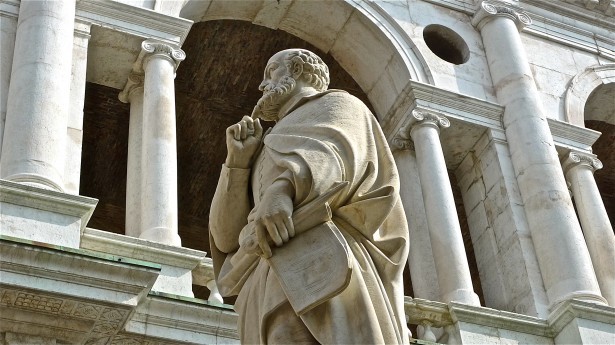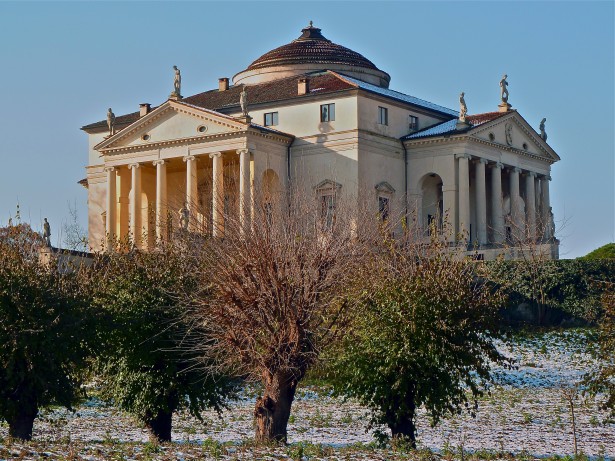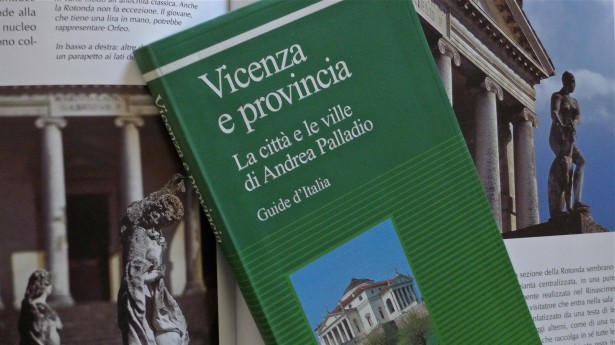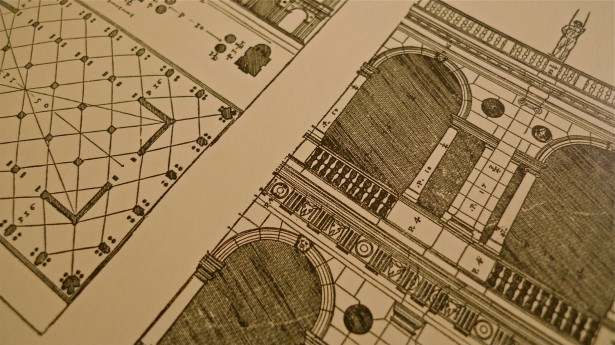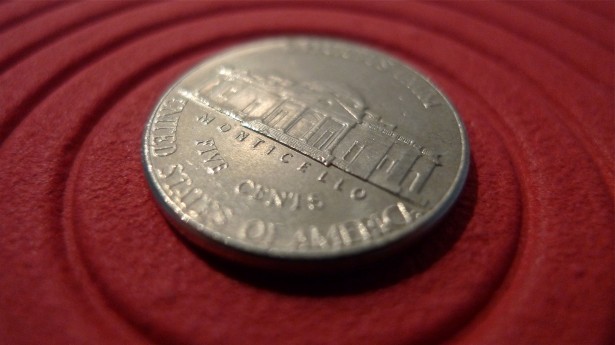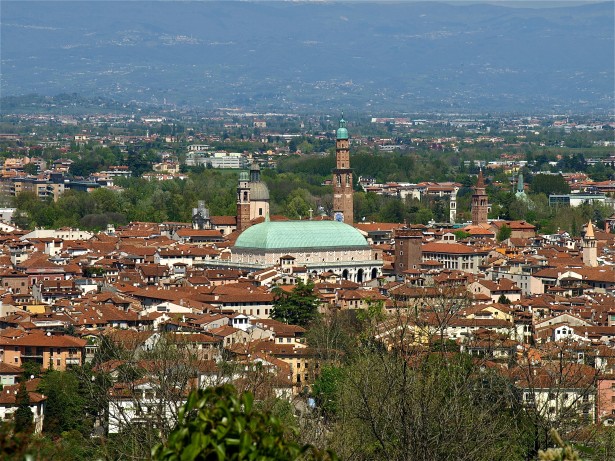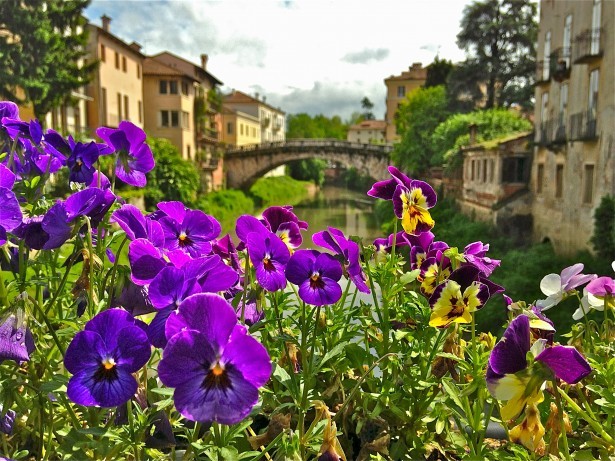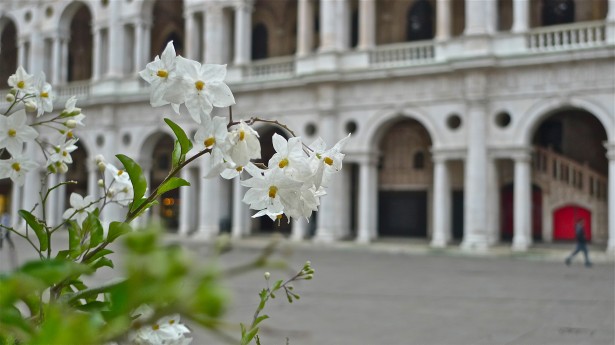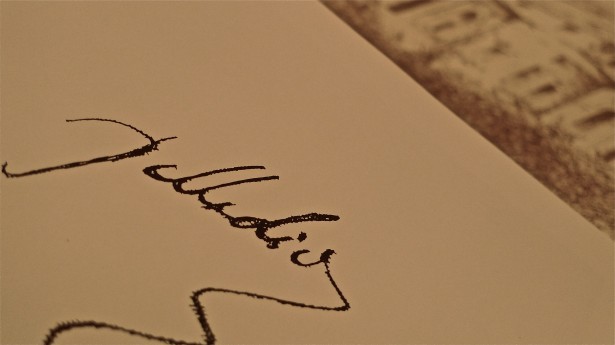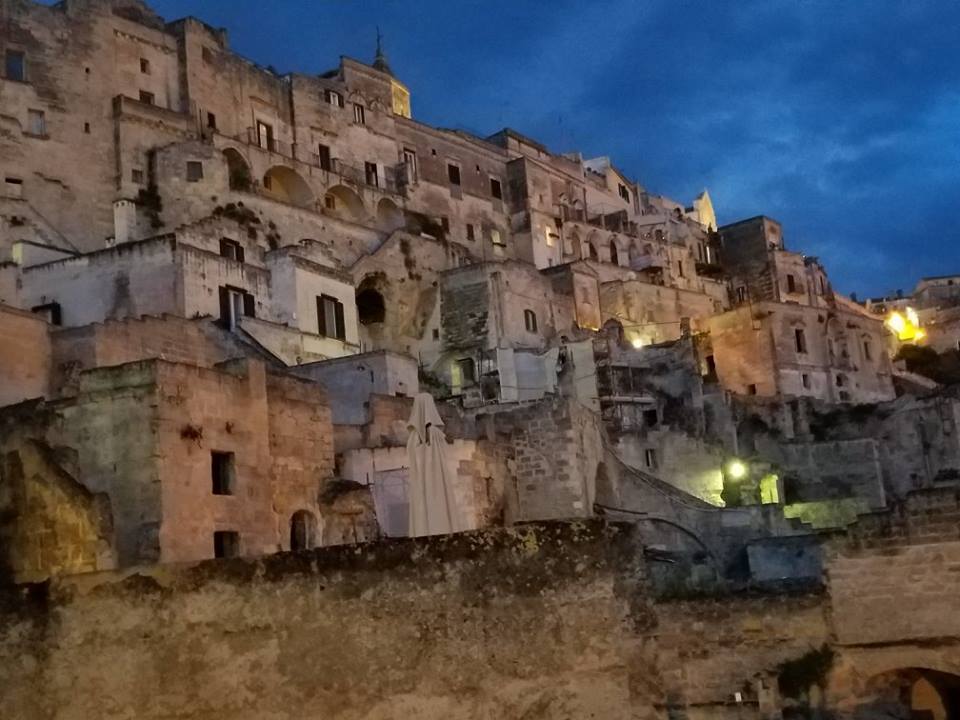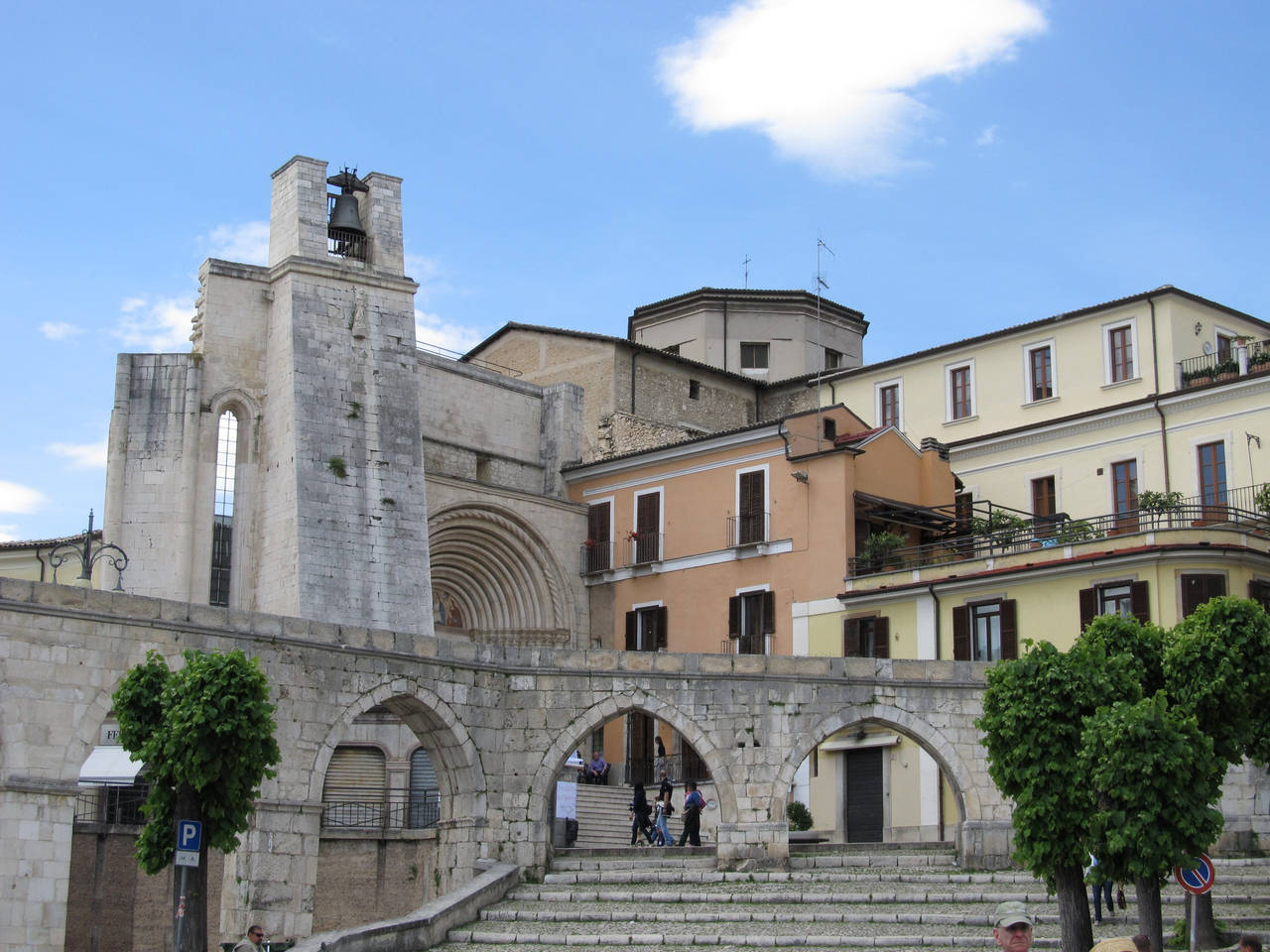Every great architect is — necessarily — a great poet. He must be a great original interpreter of his time, his day, his age. — Frank Lloyd Wright
Ed. note: Vicenza is one of my favorite Italian cities, and Tom Weber knows it inside and out. He’s a triple-threat journalist — broadcast, photo and print — and resides in Vicenza, his adopted hometown, in the Veneto region of northeastern Italy. He hosts the eclectic travel/food-and-wine/photography blog The Palladian Traveler.com and is a regular contributor for Los Angeles-based TravelingBoy.com and Rome-based ItalianNotebook.com. Feel free to follow Tom as he “meanders along the cobblestone to somewhere.”
(Statue of Palladio in the Centro Storico – Vicenza, Italy | ©Tom Palladio Images)
Andrea Di Pietro della Gondola.
A nice, simple Italian name from out of the 16th century belonging to a humble stonemason, the son of a hard-working miller. But, when a nome d’arte is finally placedbehind Andrea’s full name, he rises like a phoenix, well above the crowd, to an elite level reserved for monarchs, popes and nobility.
PALLADIO.
Widely considered to be the most influential individual in the history of Western architecture, Palladio created, nurtured and developed an architectural design style and an associated lifestyle known the world over asPalladianism.
(Villa Almerico Capra “La Rotonda” – Vicenza, Italy | ©Tom Palladio Images)
Born in Padova (Padua) and eventually schooled and culturally polished in Vicenza, the “City of Palladio,” this Italian Renaissance master builder provided an architectural crown jewel to the world that continues to inspire even while he sleeps: the Villa Almerico Capra, La Rotonda.
Since its creation, La Rotonda has drawn poets and artists, sovereigns and statesmen, scholars and art historians, and travelers and tourists alike to Vicenza to marvel at Palladio’s harmonious spatial design.
At its apex, the breath of Palladianism extended from Constantinople, to Madrid, to London to a young nation’s capitol across the Atlantic Ocean – Washington, D.C. La Rotonda, Palladio’s capo lavoro (masterpiece), as well as all of his other works, continues to resonate today, more than 400 years after his death.
(Torre Bissara stands vigil over Piazza dei Signori – Vicenza, Italy | ©Tom Palladio Images)
Without a doubt, the 16th century belonged to Palladio, a man who left behind many outstanding examples of his craft throughout the City of and Province of Vicenza and beyond with his palaces and stately villas. Before Palladio’s passage through Vicenza, it was arguably one of the more downtrodden and esthetically lacking cities around the Veneto region.
(Around the loggia of the Basilica Palladiana – Vicenza, Italy | ©Tom Palladio Images)
It was Palladio who singlehandedly placed Vicenza “on the map,” laying down a solid foundation that has enabled the city to become one of the gems in UNESCO’s World Heritage Site inventory.
He left his mark just about everywhere within the walls of the Centro Storico (Old Town Center) of Vicenza, as 23 individual buildings or sections of buildings are known to have been designed or reconstructed by Palladio or attributed to him. Among these prestigious works are the Loggia Valmarana, Palazzo Porto Breganze, Loggia del Capitaniato, Teatro Olimpico – the world’s first and oldest enclosed theatre and also Palladio’s final design work before his death – Palazzo Chiericati and the just-restored Basilica Palladiana (f.n.a. Palazzo della Ragione).
(©Tom Palladio Images)
In addition to Vicenza proper, the Palladian design style – more importantly, the Palladian lifestyle – is well represented in 24 private villa-estates that dot the landscape all across the Veneto region and are also recognized by UNESCO.
(Original design drawing by A. Palladio – photographic reproduction ©Tom Palladio Images)
Palladio’s imprint on Renaissance architecture was far reaching, and the design and construction guide books that he wrote on the subject – Quattro Libri dell’Architettura (Four Books of Architecture) – became the architectural language spoken around the world, from Europe, to Asia and across North America.
One of America’s “Founding Fathers,” Thomas Jefferson, the third President of the United States and a self-taught architect of note, absorbed Palladio’s theories of harmonious spatial design and claimed Palladio’s collective writings were the bible.
(A U.S. nickel coin | ©Tom Palladio Images)
An ardent disciple of Palladianism, Jefferson adopted the Palladian lifestyle and modeled his Virginia estate, Monticello, after Palladio’s masterpiece La Rotonda. If you don’t believe me, just look at the back of a U.S. nickel (5-cent coin) and you’ll readily see the design similarities between the two villa-estates.
(View down to the Centro Storico – Vicenza, Italy | ©Tom Palladio Images)
Fast-forward to today and one can readily see that Vicenza is a thriving, cosmopolitan city. With a population of approximately 270,000 around the greater metropolitan area, Vicenza – based upon the value of its exports — ranks as the third largest industrial center in Italy. One of the Bel Paese’s wealthiest, Vicenza has come a long, long way since the days when it was looked down upon by its more successful rivals around the Most Serene Republic of Venice.
(Flowers front Ponte San Michele – Vicenza, Italy ©Tom Palladio Images)
The Vicenza of today counts among its “favorite sons” international fashion brands Bottega Veneta, Diesel, Marlboro Classics, Marzotto and Pal Zileri; bicycle components manufacturer Campagnolo; and, Dainese, the benchmark label of protective wear for motorcycling, snow and extreme sports. Add to that, the city’s stature as the epicenter of the world’s finest goldsmiths and host to the internationally acclaimed VicenzaOro gold exposition three times a year.
(The porticos of the Basilica Palladiana – Vicenza, Italy | ©Tom Palladio Images)
By all accounts, Vicenza’s luck began to change when the young stonemason arrived, rolled up his sleeves and went to work, work that centuries later would award him the keys to the city. His city. The city of Andrea Di Pietro della Gondola – La Città del Palladio.
For complete tourist information, in English, on the City of and Province of Vicenza, the Palladian buildings and villas, hotels, food and wine, and events logon to: http://www.vicenzae.org/index.php?lang=eng
Buon viaggio!
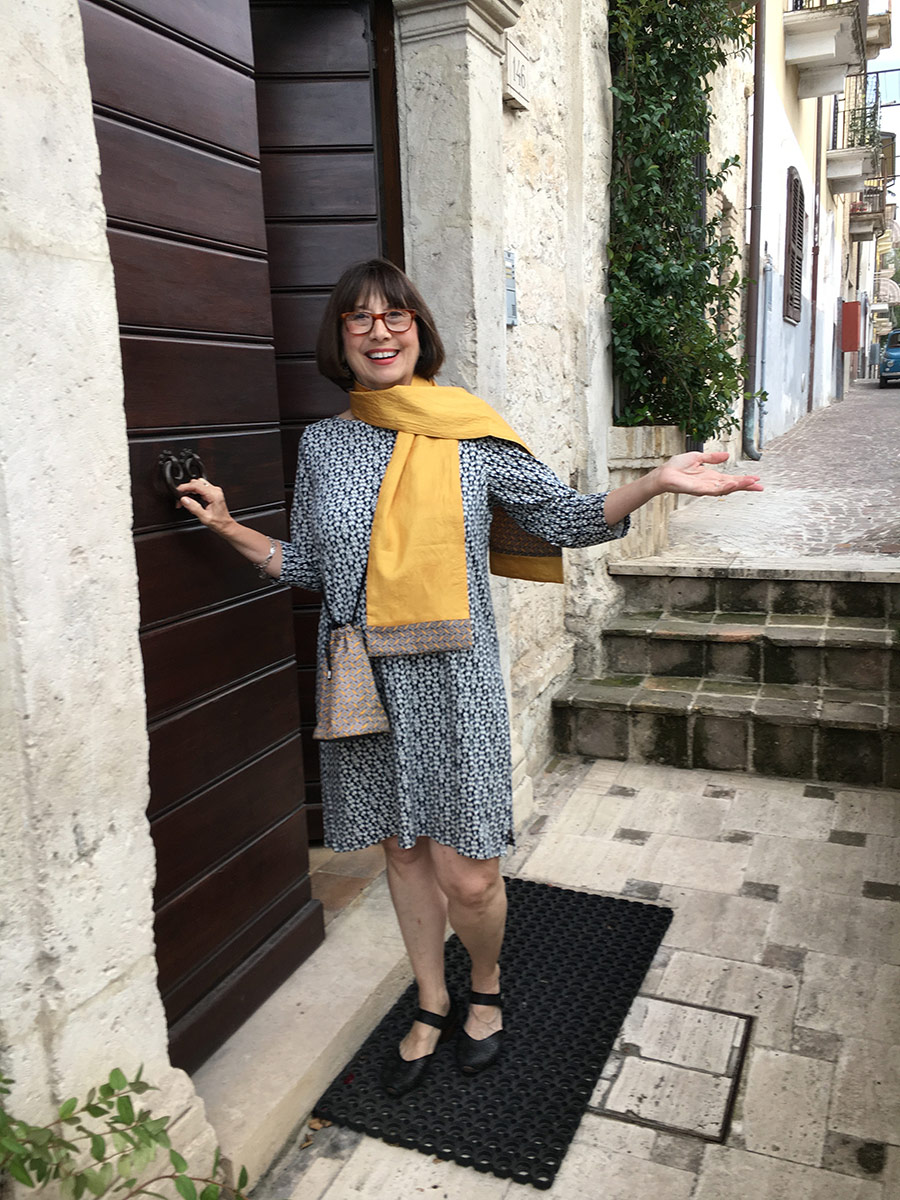
Linda Dini Jenkins is a card-carrying Italophile, travel planner, freelance writer, and amateur photographer. Travel is her passion, so writing about her travels just comes naturally. She hopes all her travelers find a way to express their joys, surprises, and fears as they travel and gives every traveler a nifty journal to help smooth the way. Learn more…
